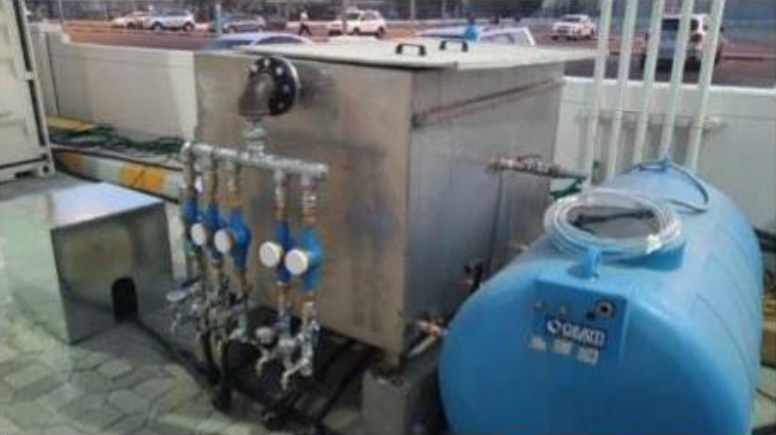Introduction
This project on In-Situ Soil Remediation was initiated following the hydrocarbon spill that occurred in October 2020. The spill occurred because of the underground pipeline rupture connected to one of the underground storage tanks. This leakage led to the migration of contamination towards the neighbourhood basements and led to vapor intrusion posing a health hazard to the inhabitants. A prompt response was needed to reduce the impact of the spill to protect the environment and receptors. As, In Situ Soil Remediation could be performed without shutting down the service station, this strategy was implemented to resolve this issue. This technology implementation is the first of its kind in the United Arab Emirates and here it is partnered with Ambienthesis Middle East, B&A Waste Management and Bee’ah.
State of Art
This approach of In Situ Soil Remediation involves 4 units which operates in synergy to achieve the goal of site subsoil clean-up. They are Pump and Treat (P&T), Product Recovery, Soil Vapor Extraction (SVE) and Air Sparging (AS). Each of have a specific purpose of operation and they target different areas of contamination. The initial phase is to contain the contamination and stop its migration outside the site boundary. Several wells were drilled along the site boundary and specific mode of extraction was implemented in each well.
Pump and Treat (P&T)
The goal of the P&T unit in this remediation operation is hydraulic containment. This has submersible pumps installed in few well along the site boundary. During its operation, it extracts water from the well and it lowers the water table. This lowering accommodates the free product to float on top of the water table hence stopping the product migration out of the site boundary. This extracted water may contain some dissolved hydrocarbons which are treated in the water treatment unit of the plant. This is well equipped with pumps for water transport, sand filter for preliminary treatment and activated carbon filters for hydrocarbon removal from the water. Hence treated water is sent to the on-site drainage system completing the water loop in the system.
Product Recovery
The product recovery unit is responsible for the free-floating product extraction from the subsoil. It has pneumatically operated pumps that run with compressed air for the product extraction. There are pneumatic pumps with skimmers and double diaphragm pumps actively extracting the floating product from the wells. This unit works in synergy with P&T, as it extracts product that is accumulated on lowered water table by the action of submersible pumps. The extracted product is accumulated in the intermediate storage tanks of the plant. In addition of the pneumatic removal, product extraction from wells is performed by vacuum-based tank truck.
Soil Vapor Extraction (SVE)
SVE is one of the most effective and cost-efficient methods of removing VOCs from unsaturated soils. A SVE system consists of extraction wells screened in the unsaturated zone, vacuum pumps, condensate separator, and an off-gas treatment system with Granular Activated Carbon vessels. Several parameters like VOC, LEL, vacuum, vapor temperature, flow velocity and humidity are measured at different points on the SVE line using analytical instruments.
Air Sparging (AS)
AS is an in situ remedial technology that reduces concentrations of volatile constituents in petroleum products that are adsorbed to soils and dissolved in groundwater. It involves the injection of contaminant-free air into the subsurface saturated zone, enabling a phase transfer of hydrocarbons from a dissolved state to a vapor phase. The air is then vented through the unsaturated zone. AS is most often operated together with SVE, but it can also be used with other remedial technologies. When AS is combined with SVE, the SVE system creates a negative pressure in the unsaturated zone through a series of extraction wells to control the vapor plume migration.




